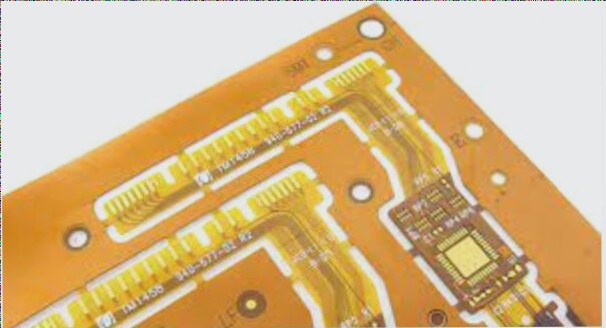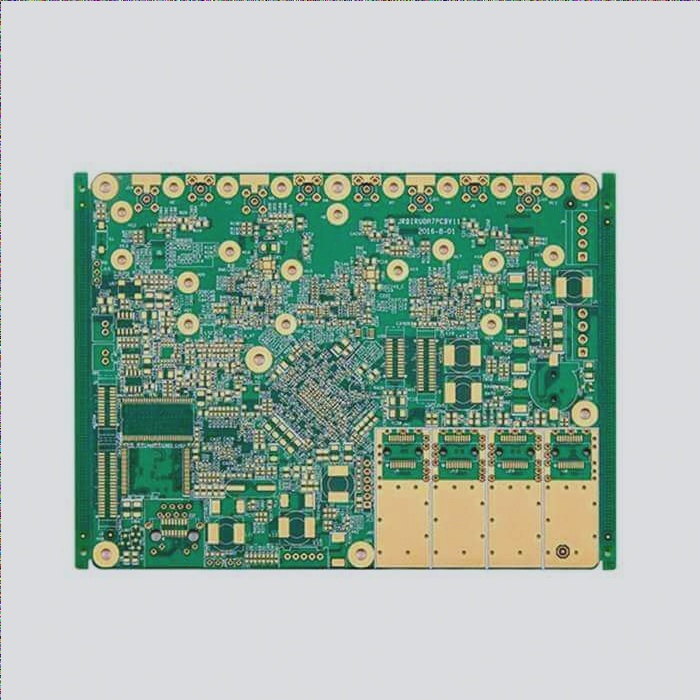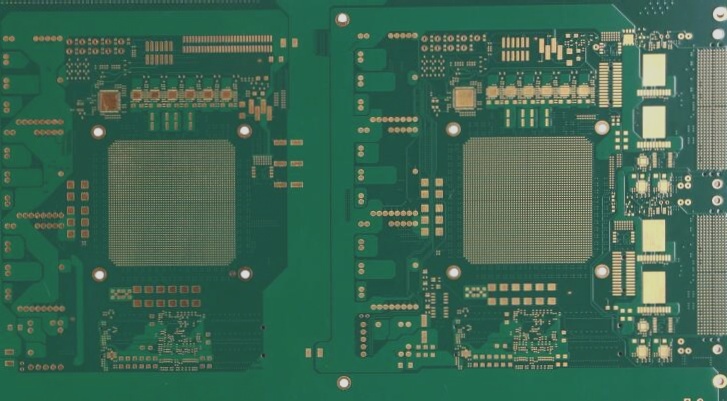ENIG Plating NG
- Cause Analysis of the Problem:
- 1.1 The nickel cylinder’s high activity or contamination of activated palladium during pretreatment can lead to issues. Factors include iron or copper ion contamination, high local temperature accelerating liquid aging, prolonged immersion time, high temperature, or inadequate washing after activation.
- 1.2 Excessive palladium absorption from previous operations or inadequate cleaning of equipment rollers before grinding plates can cause problems. Insufficient water pressure may fail to remove remaining copper powder, leading to seepage plating.
- 1.3 Presence of high colloid-activated palladium concentration after PTH pretreatment.
- Corresponding Improvement Measures:
- 1.1 Maintain nickel cylinder load between 0.3 and 0.8 dm²/L, use a suitable stabilizer, and monitor anode protection current.
- 1.2 Monitor activated tank liquid concentration, immersion time, temperature, and washing to prevent contamination. Ensure thorough washing after activation.
- 1.3 Inspect and etch QC boards before nickelization, clean brushing equipment, and control colloid-activated palladium concentration.
Leakage Plating of ENIG
- Cause Analysis of the Problem:
- 2.1 Issues may arise due to low concentration of activated palladium, inadequate activation time, temperature, or contamination. Leaving plates in the sink too long before nickel deposition can also contribute to leakage plating.
- 2.2 Copper surface contamination from residual glue, dirty treatment, external or process contamination can cause problems.
- 2.3 Factors like excessive stabilizer in the nickel sink, low temperature, inadequate activity, or pollution can lead to leakage plating.
- Corresponding Improvement Measures:
- 2.1 Control palladium concentration, monitor immersion time, and avoid copper ion contamination. Ensure timely nickel sinking.
- 2.2 Thoroughly treat copper surface before nickelization to prevent contamination.
- 2.3 Control operational parameters, maintain pre-nickelization activity, and avoid pollution to prevent leakage plating.
ENIG Immersion Gold PCB Nickel Layer “Whitening” (Nickel Layer Sub-layer, Nickel Layer Thickness is Insufficient)
Cause Analysis:
Nickel slot metal nickel ion concentration, temperature, pH value, activity, time, load, and phosphorus content may contribute to whitening issues.
Improvement Measures:
Adjust nickel ion concentration, temperature, pH value, activity, load, and phosphorus content. Ensure nickel quality meets standards.
Coarse and White ENIG PCB Layer
Cause Analysis:
Common Issues in PCB Manufacturing and Solutions
1. Residual Contaminants on Copper Surface
Issues such as residual glue, rough copper surface, or oxidation can affect PCB quality. Ensure thorough tin removal and use high-quality copper materials to prevent these problems.
2. Gold Layer Contamination
Contamination in the gold layer can result from various factors like low pH or improper gold concentration. Control the components of the gold bath liquid within the recommended range to avoid issues.
3. Poor Nickel Deposit Quality
Thin or discolored nickel layers can impact PCB performance. Improve nickel deposit quality, filtration, and temperature control to maintain a stable nickel bath liquid.
4. Welding Resistance Issues in Chemical Nickel Solution
Solid particles or whitening in the nickel layer can lead to welding resistance problems. Enhance filtration of the chemical nickel solution to prevent contamination.
5. Drop Gold or Nickel Poor Binding
Issues like nickel surface passivation or copper ion contamination can cause poor binding of gold layers. Take preventive measures such as adjusting nickel parameters and improving copper treatment cleanliness.
6. Poor Solderability in Immersion Gold Surface PCBs
Thin gold layers or contamination by impurities can result in poor weldability. Maintain an optimal gold thickness and control water quality to enhance solderability.
7. Corrosion of Nickel Layer
Factors like long gold immersion time or low pH can lead to corrosion of the nickel layer. Control gold deposition rate and maintain proper pH and temperature levels to prevent corrosion.
8. Pinhole Formation in Nickel Layer
Pinholes in the nickel layer can be caused by various factors. Implement proper control measures to prevent pinhole formation and ensure the integrity of the PCB.
Common Issues in Nickel Plating Process
-
Poor Nickel Slot Filter Exhaust and Weak Stirring
Causes: Soluble particles in nickel solution, poor pretreatment, or organic contamination.
Improvement Measures: Enhance filter exhaust conditions, maintain pipeline circulation, increase oscillation intensity, and optimize mixing.
-
High Current in Ejection Protection Device
Reasons: High nickel bath temperature, elevated pH, local overheating, rapid replenishment, or low tranquilizer; slot wall passivation; carrying activating liquid; nickel and gold fragments in slot; abnormal ejection protection device; improper stainless steel groove passivation.
Solutions: Regulate nickel liquid parameters, prevent groove wall passivation, avoid carrying activating residue, clean hangers regularly, upgrade ejection protection device, re-passivate with nitric acid.
-
Liquid Nickel Turbidity
Factors: High nickel pH or temperature, excessive carry-out, leaks, high activity imbalance.
Actions: Maintain pH and temperature, supervise operations, upgrade equipment, improve solution maintenance.



